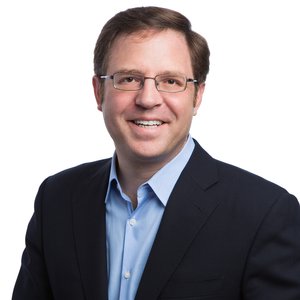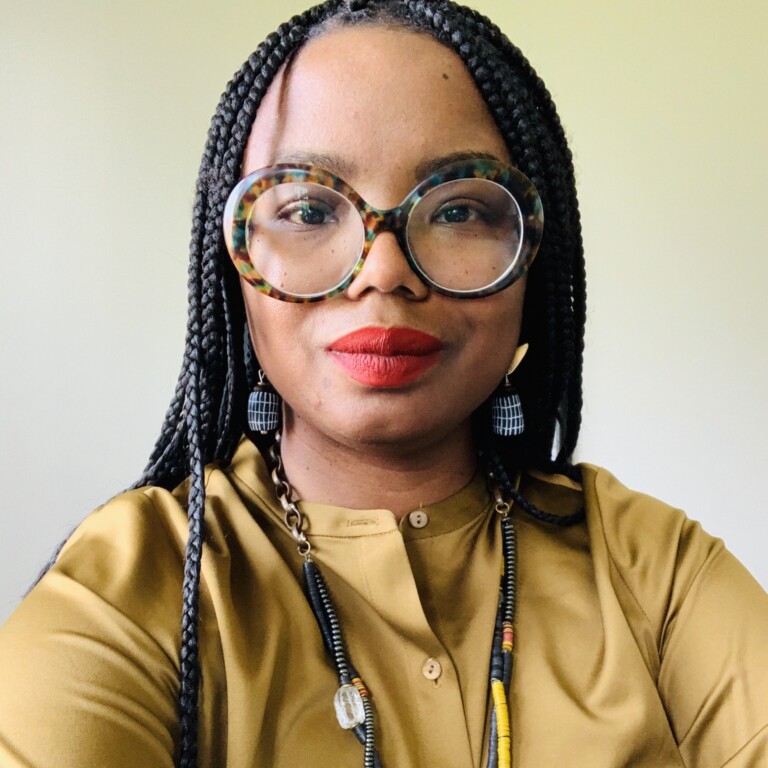Historically Black Colleges and Universities Play a Key Role in States' Digital Equity Plans
Friday, August 26, 2022
Weekly Digest
Historically Black Colleges and Universities Play a Key Role in States' Digital Equity Plans
You’re reading the Benton Institute for Broadband & Society’s Weekly Digest, a recap of the biggest (or most overlooked) broadband stories of the week. The digest is delivered via e-mail each Friday.
Round-Up for the Week of August 22-26

Historically Black Colleges and Universities (HBCUs) are community anchors with the influence and expertise that states need as they prepare for unprecedented federal broadband funding to equitably close the digital divide in the United States. That was the crux of the conversation at an August 23 webinar hosted by the National Telecommunications and Information Administration (NTIA) where federal officials and community advocates highlighted how HBCUs and other Minority-Serving Institutions (MSIs) can advocate for and include their communities in states’ broadband funding plans for the Infrastructure Investment and Jobs Act's (IIJA) programs.
“HBCUs are bedrock centers of learning,” said Alan Davidson, U.S. Department of Commerce assistant secretary of commerce for communications and information and NTIA administrator. “Too often, HBCUs and MSIs have been left behind when it comes to having access to [broadband].”

With $65 billion for broadband infrastructure and affordability included in the IIJA, Davidson says that the US now has the resources to "do something really serious" about the digital divide. “Our generation’s infrastructure moment is broadband,” he said. Through the Broadband Equity, Access and Deployment (BEAD) Program and the Digital Equity Act (DEA), both established by the IIJA, US states, territories, and tribes are now in the process of developing comprehensive initial proposals to achieve internet access for all. “[The IIJA] said very clearly that the states need to show us they have included local communities and community organizations in their planning,” said Davidson. Among these community organizations are HBCUs.
The digital divide has a disproportionate effect on Black and minority communities in the US. Black and Hispanic adults in the United States remain less likely than White adults to say they own a traditional computer or have high-speed internet at home. And in the Black Rural South—152 rural counties with populations that are at least 35 percent Black—38 percent of African Americans report that they lack home internet access. Additionally, the percentage of students who had either no internet access or only dial-up access at home has historically been higher for Black and Hispanic students than for White and Asian students.
The NTIA webinar, part of the White House Initiative on Advancing Educational Equity, Excellence and Economic Opportunity Through HBCUs, was geared toward HBCUs who had applied to the Connecting Minority Communities Pilot Program. The $268 million-dollar program provides funds to HBCUs, Tribal Colleges and Universities (TCUs), and other Minority-Serving Institutions (MSIs) for the purchase of broadband internet access service for students and eligible equipment or to hire and train information technology personnel. The first awardees under the program were announced in late July, and NTIA said another announcement is soon to come.
Forty percent of Connecting Minority Communities grant funds must be awarded to HBCUs and 20 percent of the funds must be used to provide broadband access and/or devices and equipment to students–and those requirements are not mutually exclusive. Over 80 HBCUs have applied to the Connecting Minority Communities Pilot Program according to Dr. Fallon Wilson, vice president of policy at the Multicultural Media and Telecommunication Internet Council (MMTC) and #BlackTechFutures Research Institute co-founder. During the webinar, Wilson discussed how HBCUs can use broadband infrastructure funding to build black tech ecosystems in their cities.
A black tech ecosystem, as defined by UmanityEDU (also founded by Dr. Wilson), is an ecology of institutions within black communities that are optimized and aligned to expedite the growth of black innovation and populated by black tech founders, innovators, scientists, creatives, faith leaders, public interest technologists, and community tech leaders.
“There is no future for Black people in an innovative world without HBCUs,” said Dr. Wilson. “They are necessary…HBCUs already have what we need to create a Black Tech Future in the US.”
HBCUs are a cornerstone of building black tech ecosystems in US cities. There are 54 HBCU research institutions throughout the country, according to Dr. Wilson. HBCUs and all other US anchor institutions have critical knowledge about their communities' particular barriers to broadband access, which is a necessary part of cultivating opportunity in a black tech ecosystem.
It is crucial to leverage the role of HBCUs as hubs for innovation and economic opportunity in their communities according to Kevin Hughes, acting director of NTIA’s Office of Minority Broadband Initiatives (OMBI). The OMBI oversees the Connecting Minority Communities Pilot Program as part of its larger mission to work on solving broadband deployment challenges in vulnerable communities in partnership with HBCUs.
Davidson described three areas in which HBCUs can engage in the IIJA-funded broadband buildout. First, at the state level, HBCUs can get to know the folks in their respective state broadband offices and advise states on their communities' broadband needs. According to Dr. Wilson, HBCUs can help both the NTIA and state broadband offices understand which counties are predominantly African American and are unserved or underserved.

“Many state broadband offices are new…and looking to engage with [HBCUs],” said Dr. Wilson. She provided a number of examples of how HBCU anchors can get involved in federal funding program planning. These include assessing digital equity in an HBCU's Black counties and census tracts and requesting states’ letters of intent for the BEAD Program and DEA from the NTIA, so stakeholders can let the agency know if MSIs were or were not included. In addition, HBCUs can connect state officials with their existing programming and efforts, especially if they are recipients of Connecting Minority Communities funds, National Science Foundation grants, or have a research center on campus. They can then schedule a meeting to share their findings and how they are positioned to "steer conversations, resources, and partnerships to support Black communities" in their states.
The second opportunity for HBCUs to get involved in the IIJA infrastructure build-out, Davidson said, is to make sure the needed telecommunications industry jobs are filled by the communities benefitting from the funding efforts—to make sure there is more diversity and representation in tech and telecommunications. The IIJA is not just about connection, but is also a jobs effort, Davidson added. "Talk to providers about the jobs they need," he said.
Programs like the Connecting Minority Communities Pilot Program aim to do exactly this: amplify the current efforts of HBCUs and other MSIs to help boost a more diverse and greatly-needed telecom workforce. Dr. Wilson asserted that federal funding is key in highlighting and helping to advance what HBCUs are already doing now.
Davidson's final step is a "homework assignment on affordability": highlighting the Affordable Connectivity Program, the Federal Communications Commission's benefit program that provides a discount of up to $30 per month toward internet service for eligible households and up to $75 per month for households on qualifying Tribal lands. Eligible households can also receive a one-time discount of up to $100 to purchase a laptop, desktop computer, or tablet from participating providers if they contribute more than $10 and less than $50 toward the purchase price. "Millions of households" are not taking advantage of the program, Davidson said. HBCUs can help highlight the program, spread the word, and get those households connected.
"Black people in this country are a device-less people," said Dr. Wilson. She highlighted the Emergency Connectivity Fund—a $7.171 billion program helping schools and libraries provide laptops, tablet computers, Wi-Fi hotspots and other connectivity needs for off-campus use by students, school staff, and library patrons—as well as the Affordable Connectivity Program as funding efforts trying to connect the unconnected. HBCUs can partner with local libraries to leverage Emergency Connectivity Fund resources and connect students and community members. They can also apply for the FCC's Affordable Connectivity Outreach Grant Program to help students and their families sign up for the subsidy program.
Access to high-speed broadband can help maximize savings for education, stimulate growth in the economy, lower costs for health, and strengthen ties in our communities, according to the NTIA. Community anchor institutions are powerful partners in helping to accomplish these goals. Because of this, Dr. Wilson says, "HBCUs need our support."
Quick Bits
- NTIA Awards More Than $143 Million in Grants to Expand High-Speed Internet Access on Tribal Land in California, Washington
- NTIA Awards Nearly $119 Million in Grants to Expand High-Speed Internet Access on Tribal Lands in Five States
- Federal Communications Commission Announces $42 Million in Emergency Connectivity Funding
- Middle Mile Networks: What and Why (CENIC)
- Republican Senators Push NTIA to Implement Infrastructure Investment and Jobs Act as Congress Intended (US Senate)
Weekend Reads (resist tl;dr)
- A Detailed Review: The Status of U.S. Broadband and The Impact of Fiber Broadband (Fiber Broadband Association)
ICYMI from Benton
- Getting a BEAD on Community Asset Mapping
- Against Digital Redlining: Lessons from Philadelphia’s Digital Connectivity Efforts during the Pandemic
- Oklahoma State University Institute of Technology Connects Rural Students and Trains Fiber Technicians
- The Future of Universal Service is Still in the Future
- How You Can Partner With the FCC to Improve Broadband Adoption
Upcoming Events
Aug 30—How Can the United States Address the Data Divide? (Center for Data Innovation)
Aug 30—Consumer Advisory Committee (FCC)
Aug 31––Internet For All: Inaugural Louisiana Broadband Solutions Summit (Louisiana Office of Broadband Development & Connectivity)
Aug 31––State and Local Coordination Make Broadband Programs More Sustainable (Merit)
Aug 31––ReConnect Round 4 Deep Dive Webinar: Environmental (USDA)
Sep 8––Commercial Surveillance and Data Security Public Forum (FTC)
Sep 13—Workshop On Environmental Compliance And Historic Preservation Review Procedures (FCC)
Sep 14—Internet for All Webinar Series – Review Top FAQs of the Enabling Middle Mile Broadband Infrastructure Program Application (NTIA)
Sep 15—Technological Advisory Council Meeting (FCC)
Sep 19––Spectrum Policy Symposium (NTIA)
Sep 22—40th Annual Parker Lecture & Awards Ceremony (United Church of Christ Media Justice Ministry)
Sep 24—Capital Projects Fund Grant Plan Deadline (Department of Treasury)
Sep 25-28—The Right Connection (CENIC)
Sep 28—Local Coordination in NOFOs (NTIA)
Sep 29—September 2022 Open Federal Communications Commission Meeting
Sep 30—Enabling Middle Mile Broadband Infrastructure Program Applications Due
The Benton Institute for Broadband & Society is a non-profit organization dedicated to ensuring that all people in the U.S. have access to competitive, High-Performance Broadband regardless of where they live or who they are. We believe communication policy - rooted in the values of access, equity, and diversity - has the power to deliver new opportunities and strengthen communities.
© Benton Institute for Broadband & Society 2022. Redistribution of this email publication - both internally and externally - is encouraged if it includes this copyright statement.
For subscribe/unsubscribe info, please email headlinesATbentonDOTorg






